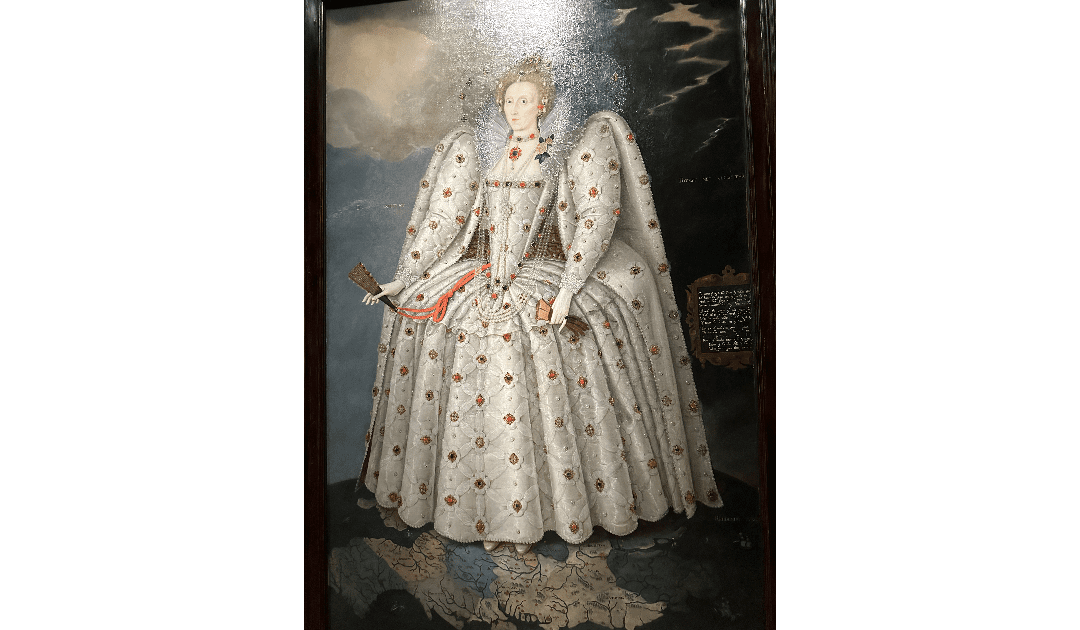Elizabeth I ascended to the throne on 17th November 1558 following the death of her half-sister Mary I, or Bloody Mary. She was known as Bloody Mary because of her reintroduction of heresy law in 1555 leading to the burning of around three hundred Protestants. In 1554 she married King Phillip II of Spain. It wasn’t a happy or fruitful marriage, and it wasn’t popular either.
Elizabeth was a Protestant, but endeavoured to pursue a policy of tolerance towards Catholics. Unfortunately her reign endured numerous Catholic plots to replace her with her cousin, Mary Queen of Scots.
The main plot to replace Elizabeth with Mary began to take shape when Mary was forced to abdicate the Scottish throne in 1567. She sought refuge in England, hoping that her cousin Elizabeth would support her claim to the English throne. However, Elizabeth, wary of Mary’s potential threat to her own reign, placed her under house arrest for almost two decades. The Northern Rebellion, also known as the Rising of the North, took place in 1569. The rebellion was triggered by a combination of religious and political factors. Many Catholics in the north felt marginalized and persecuted under Elizabeth’s Protestant rule. They were discontented with the increasing power of Protestantism and the suppression of Catholic practices. Additionally, there were concerns about the queen’s policies, such as the imposition of new taxes and the appointment of Protestant officials in Catholic-dominated regions.
The leaders of the rebellion included prominent Catholic nobles, such as the Earls of Northumberland and Westmorland. They aimed to restore Catholicism and remove Elizabeth from the throne. The rebels managed to seize control of some towns, such as Durham and Barnard Castle, and initially gained support from the local population.
However, the rebellion ultimately failed due to a lack of coordination, support, and military resources. The rebels’ initial successes were short-lived, as the queen’s forces quickly mobilized and gathered a larger army. Elizabeth’s forces, led by loyalist nobles and experienced commanders, swiftly crushed the rebellion.
Several plots were hatched to overthrow Elizabeth and install Mary as the reigning queen. The most notable of these was the Babington Plot in 1586. Anthony Babington, a fervent Catholic and supporter of Mary, devised a plan to assassinate Elizabeth and free Mary from captivity. However, the plot was discovered, and Babington and his associates were arrested and executed.
The discovery of the Babington Plot further increased Elizabeth’s suspicions and fears regarding Mary’s potential as a rival. As a result, a trial was held, and Mary was found guilty of treason in 1587. Elizabeth reluctantly signed the death warrant, and Mary was executed the following year.
The plots to replace Elizabeth with Mary Queen of Scots ultimately failed, as Elizabeth’s intelligence network successfully uncovered and thwarted these attempts. Elizabeth’s reign continued, and she remained the undisputed queen until her death in 1603.
I know of only one man who was knighted by both Mary Queen of Scots and Queen Elizabeth I, my 11th great-uncle, Sir Anthony Standen, The Spy who Sank the Armada. I’d be interested if you know of another. Let me know via the contact button.

